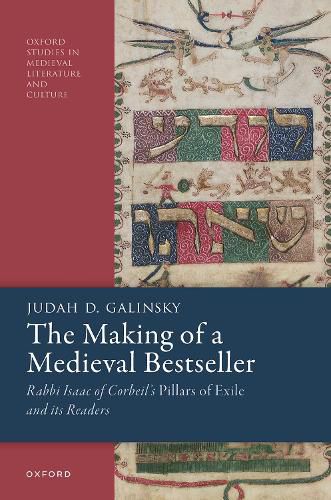Readings Newsletter
Become a Readings Member to make your shopping experience even easier.
Sign in or sign up for free!
You’re not far away from qualifying for FREE standard shipping within Australia
You’ve qualified for FREE standard shipping within Australia
The cart is loading…






In 1277, Rabbi Isaac of Corbeil produced a concise work of accessible religious law. This handbook, 'Amudei Golah (Pillars of Exile), began as a list of religious commandments (mitzvot) meant to be recited weekly. It was divided into seven 'pillars', drawn primarily from the limbs of the human body and its activities (heart, hand, mouth, monetary transactions, etc), and dealt exclusively with laws relevant to Jews living in the Diaspora in medieval times. This handbook of religious law, written in Hebrew, became the most widespread book of its kind during the late Middle Ages within the various French- and German-speaking Jewish communities known as Ashkenaz. Nearly two hundred medieval copies of the work are found in public libraries and private collections today, an astounding number for a Hebrew work at the time. In The Making of a Medieval Bestseller, Judah Galinsky approaches his study in three parts. The first surveys the ideological and cultural reasons that Rabbi Isaac composed the work and describes how the book evolved over time. The second part traces the book's impressive circulation and analyzes the various reasons behind the book's success, suggesting that readers who were outside the scholarly class may have been key to the work's popularity. In the third part, Galinsky addresses the readers themselves, who ordered copies of the work from a scribe. Galinsky discerns the cultural profile of the patrons who commissioned the codex by paying attention to the books they requested to have copied alongside it, or its 'fellow travelers'.This study is a history of a medieval bestseller. It describes how it came into being, grew, and evolved, and also charts its circulation, explains its unique appeal, and depicts its readers.
$9.00 standard shipping within Australia
FREE standard shipping within Australia for orders over $100.00
Express & International shipping calculated at checkout
In 1277, Rabbi Isaac of Corbeil produced a concise work of accessible religious law. This handbook, 'Amudei Golah (Pillars of Exile), began as a list of religious commandments (mitzvot) meant to be recited weekly. It was divided into seven 'pillars', drawn primarily from the limbs of the human body and its activities (heart, hand, mouth, monetary transactions, etc), and dealt exclusively with laws relevant to Jews living in the Diaspora in medieval times. This handbook of religious law, written in Hebrew, became the most widespread book of its kind during the late Middle Ages within the various French- and German-speaking Jewish communities known as Ashkenaz. Nearly two hundred medieval copies of the work are found in public libraries and private collections today, an astounding number for a Hebrew work at the time. In The Making of a Medieval Bestseller, Judah Galinsky approaches his study in three parts. The first surveys the ideological and cultural reasons that Rabbi Isaac composed the work and describes how the book evolved over time. The second part traces the book's impressive circulation and analyzes the various reasons behind the book's success, suggesting that readers who were outside the scholarly class may have been key to the work's popularity. In the third part, Galinsky addresses the readers themselves, who ordered copies of the work from a scribe. Galinsky discerns the cultural profile of the patrons who commissioned the codex by paying attention to the books they requested to have copied alongside it, or its 'fellow travelers'.This study is a history of a medieval bestseller. It describes how it came into being, grew, and evolved, and also charts its circulation, explains its unique appeal, and depicts its readers.